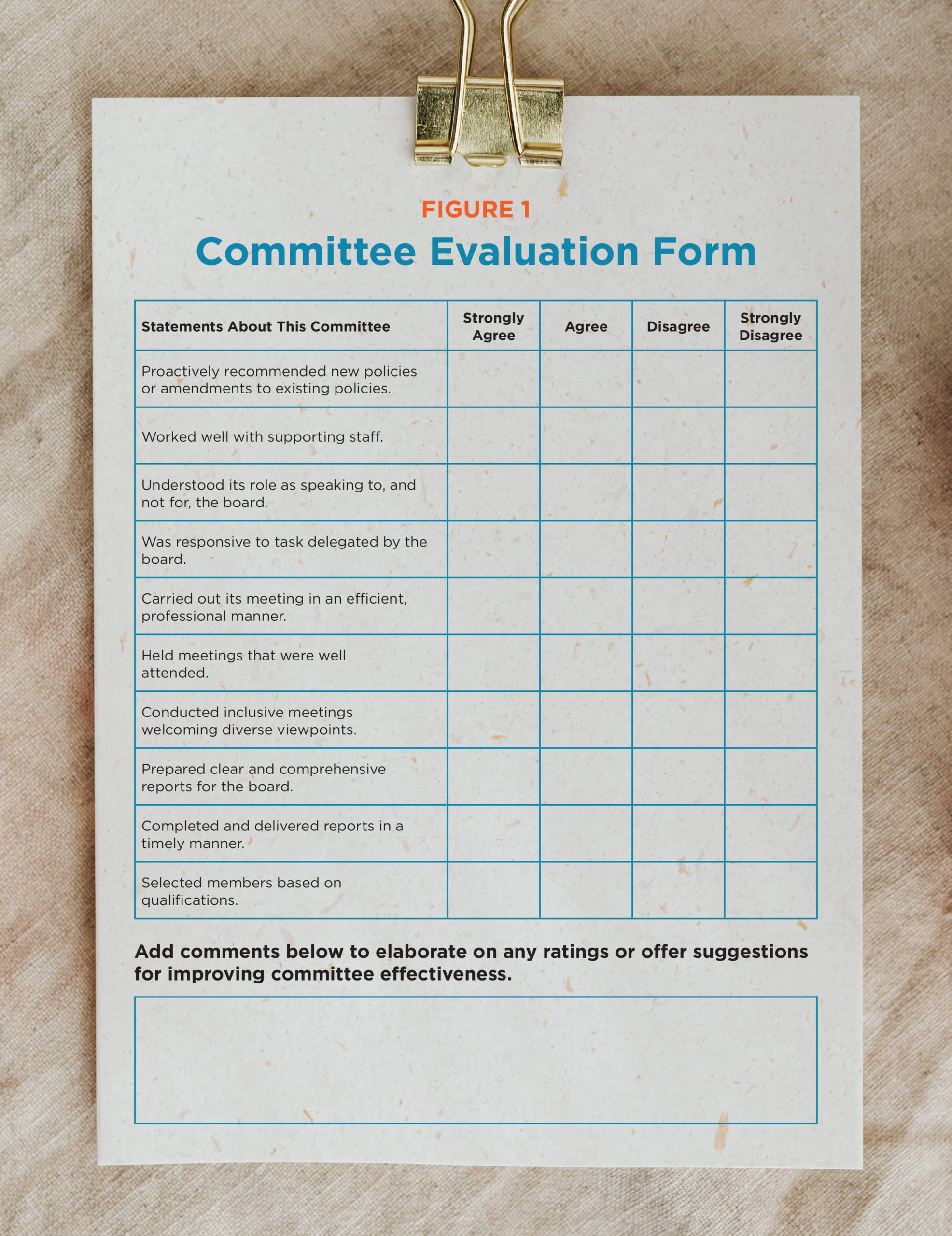From Forming to Performing: Principles and Practices for Effective Club Committees
- September 15, 2022
- Liz McDowell, Latest News, Governance, Insight, Private Clubs, Governance Insights & Resources, Best Practice, Leadership, Featured

Regardless of how a club chooses to align committees within its governance model, there remains the challenge of how best to establish them (forming) and realize their full potential (performing). Here, we describe the principles and best practices that apply to the constructive formation and effective performance of club committees.
Forming: Number, Size, Leadership, Membership and Terms
Number
There is no perfect number of club committees or ideal description of their scopes. The bylaws may specify what committees are required, but they usually authorize the board to create additional committees as it deems necessary and appropriate. Have a balance. Establish enough committees to address the breadth of areas prioritized by the club, but don’t overdo it. Having too many committees can lead to compartmentalization; having too few can burden them with too wide a scope. Most clubs have between six and 10 committees, which seems to provide a good balance.
Size
Committee size varies with the function and the desire for multiple perspectives. For example, the finance committee may contain four or five members who have relevant skill sets, while the golf committee may have seven or eight members and benefit from perspectives based on age, gender, handicap levels and the like. Avoid overpopulation, however, as too many members can reduce a committee’s efficiency and effectiveness.
Leadership
The next task is deciding on committee chairs. Here again, the bylaws may dictate the process. For example, the bylaws may state that the president selects committee chairs. They may also require that commit-tees be chaired by a board member. While we support the president selecting the committee chairs, we recommend a board policy with guidelines the president must use in the selection process. For example, the board’s policy may include a requirement for the president to refer to a board-approved profile of the ideal committee chair in terms of skill sets, leadership, good judgment, civil discourse and other desirable traits.
We do not favor the requirement that committee chairs be drawn from sitting board members. Select chairs on their merits, not their offices. If a board member fits the profile of a chair, fine, but unless the bylaws require it, don’t allocate committee chairs among board members simply based on their positions.
Membership
Now comes the time to populate your committees. We recommend allowing the committee chair to select his/her committee members. Again, however, we recommend that the board develop a policy to guide the chair in selecting committee membership. It is common for clubs to rely on volunteers to serve on committees. Yet, while a person’s desire to be on a committee is a useful criterion, it shouldn’t be the sole basis. Often, club members volunteer to serve on a committee to advance a particular agenda or program, which may make their membership on the committee more of a problem than a benefit.
Some club bylaws require the board to approve both the committee chairs and committee members. Although we don’t believe it is a necessary provision, it can be a way for the board to confirm that its policies were honored in the selection of a committee chair and committee members.
Many clubs require a year or two of service on a committee to quality for nomination to the board. This is a useful requirement as committees provide an excellent source for identifying board candidates. A member’s contribution to a committee is a good indicator of their likely contribution as a board member.
Terms
Clubs should have one-year terms for both committee chairs and committee members, with an allowance for additional terms so long as the chairs and members are selected on their performance and not by default. If you have a good pool of candidates who are willing to serve on committees, you may want to set a limit on the number of additional terms.
Performing: Management and Evaluation
Management
Once a club has established a committee and its chair, the board must develop a charter to clarify the committee’s role, its organization, the expectations of its members and the metrics used to gauge its effective-ness. The length of committee charters will vary with the amount of detail describing the committee’s scope. Although some charters include two or three pages of specifics, we favor general descriptions of scope that avoid exhaustive detail. If problems arise, such as a committee drifting out of its lane, the board can always add detail to bring it back in line.
Evaluation
It’s perhaps a bromide, but it’s true: What gets measured gets done. Precious few clubs formally measure the performance of their committees. Those that do rarely complain to us about the effective-ness of their committees. The below visual is an example of an instrument to measure a committee’s effectiveness. It can be used as a self-evaluation by committee members or as an annual survey for board members to complete. If committee chairs and committee members are aware of the rubric used in their evaluation, they are far more likely to be effective.

Gaining the full benefit of club committees does not involve sophisticated techniques or innovative approaches. It simply requires carefully choosing their scopes, organization, leadership and member-ship. Then, by managing and measuring their performance, a club will realize the potential of committees and add significantly to the effectiveness of its governance model.
This piece was authored for the National Club Association's Summer 2022 Issue of Club Governance.



